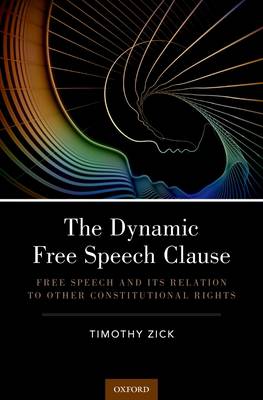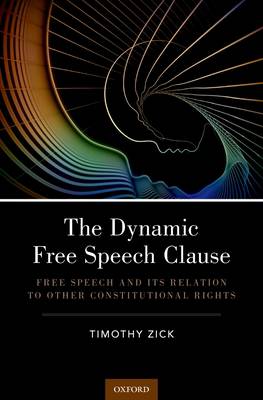
- Retrait gratuit dans votre magasin Club
- 7.000.000 titres dans notre catalogue
- Payer en toute sécurité
- Toujours un magasin près de chez vous
- Retrait gratuit dans votre magasin Club
- 7.000.0000 titres dans notre catalogue
- Payer en toute sécurité
- Toujours un magasin près de chez vous
Dynamic Free Speech Clause
Free Speech and Its Relation to Other Constitutional Rights
Timothy Zick
Livre relié | Anglais
117,95 €
+ 235 points
Description
The right to free speech intersects with many other constitutional rights. Those intersections have significantly influenced the recognition, scope, and meaning of rights, ranging from freedom of the press to the Second Amendment right to bear arms. They have also influenced interpretation of the Free Speech Clause itself. This book examines the relations between the U.S. Constitution's Free Speech Clause and other constitutional rights. Free speech principles and doctrines have brought about constitutional rights including equal protection, the right to abortion, and the free exercise of religion. They have also provided mediating principles for constructive debates about constitutional rights. At the same time, in its interactions with other constitutional rights, the Free Speech Clause has also been a complicating force. It has often dominated rights discourse and has subordinated or supplanted free press, assembly, petition, and free exercise rights. Currently, courts and commentators are fashioning the Second Amendment right to keep and bear arms in the image of the Free Speech Clause. Borrowing the Free Speech Clause for this purpose may turn out to be detrimental for both rights. While examining the dynamics that have brought free speech and other rights together, the book assesses the products and consequences of these intersections, and draws important lessons from them about constitutional rights and constitutional liberty. Ultimately, the book defends a pluralistic conception of constitutional rights that seeks to leverage the power of the Free Speech Clause but also tame its propensity to subordinate, supplant, and eclipse other constitutional rights.
Spécifications
Parties prenantes
- Auteur(s) :
- Editeur:
Contenu
- Nombre de pages :
- 324
- Langue:
- Anglais
Caractéristiques
- EAN:
- 9780190841416
- Date de parution :
- 12-09-18
- Format:
- Livre relié
- Format numérique:
- Genaaid
- Dimensions :
- 155 mm x 236 mm
- Poids :
- 566 g

Les avis
Nous publions uniquement les avis qui respectent les conditions requises. Consultez nos conditions pour les avis.






